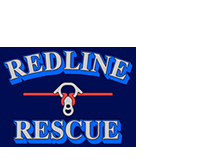

By Janet Lubman Rathner, Laborers' Health & Safety Fund of North America
Construction workers often work in confined spaces – areas that are large enough for an employee to enter and work, have limited means to enter and exit and are not designed for regular occupancy. Examples of confined spaces include sewers, tunnels, pipelines, attics and crawl spaces. OSHA's Confined Spaces in Construction standard defines two types of confined spaces: permit required and non-permit required. It's up to the employer to assess the hazards present and determine whether the confined space will require a permit for employees to enter.
But whether they are permit-required confined spaces (PRCSs) or non-permit required confined spaces (NPRCSs), all confined spaces can be hazardous. Understanding why and providing appropriate training can help prevent the deaths that occur in confined spaces every year. According to the Bureau of Labor Statistics, workplace-related confined space fatalities rose 15 percent to 166 workers in 2017. Many of these deaths occurred during rescue attempts that not only failed to get the victim out, but also took the life of the would-be rescuer. According to NIOSH, approximately 60 percent of confined space fatalities are from botched rescues that result in multiple victims.
A confined space that requires a permit includes at least one of the following hazards that could affect a worker's ability to leave the area without assistance:
All of these hazards require extra precautions and training for workers. For example, workers involved in sewer repair can be exposed to gases like methane, ammonia and hydrogen sulfide, all of which are toxic and can be fatal in high concentrations. To reduce this risk, employers must designate a competent person who will inspect the area on a daily basis and determine the appropriate safety measures. In addition to monitoring air quality before and during entry, these safety measures could include providing ventilation, personal protective equipment and safety equipment should workers need to be rescued.
A non-permit confined space doesn't necessarily mean the space is free of hazards. For example, workers working in a trench that's been deemed a NPRCS could still be exposed to dropped objects from above. This hazard doesn't hinder workers' ability to enter or exit the trench. However, the same trench could become a PRCS if the ground shifts overnight and causes a buildup of hazardous gas that wasn't there previously.
OSHA's Confined Spaces in Construction Standard requires employers to ensure workers are aware of all of the confined spaces at the worksite and that they know not to enter these spaces unless they have been trained and authorized. If the confined space is a PRCS, employers must also station an attendant at the entrance to ensure unauthorized workers do not inadvertently enter. If an emergency occurs, such as a worker being overcome from exposure to a hazardous gas, the attendant also contacts trained rescue personnel and ensures they are the only personnel allowed to enter the PRCS.
The LHSFNA's new Confined Spaces in Construction toolbox talk and Confined Spaces Health Alert can help signatory contractors educate workers on how to stay safe when working in these environments. These and other publications can be ordered in the online Publications Catalogue. The LHSFNA's Occupational Safety and Health Division can provide additional assistance. For more information, call 202-628-5465.
Red Line Rescue consists of Fire/Rescue, Paramedic, Tech Rescue, and Emergency Medical Technicians (EMT) that are trained to the highest standards. We have the capability to actively manage all emergency situations in the safest and most efficient ways possible.

all materials copyright © 2024
Redline Rescue